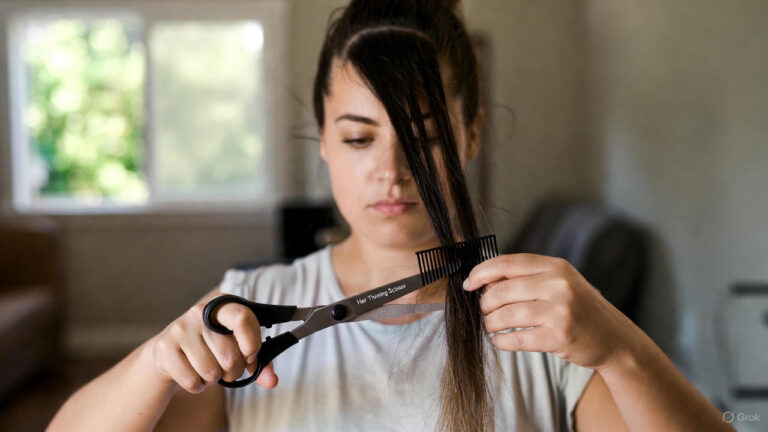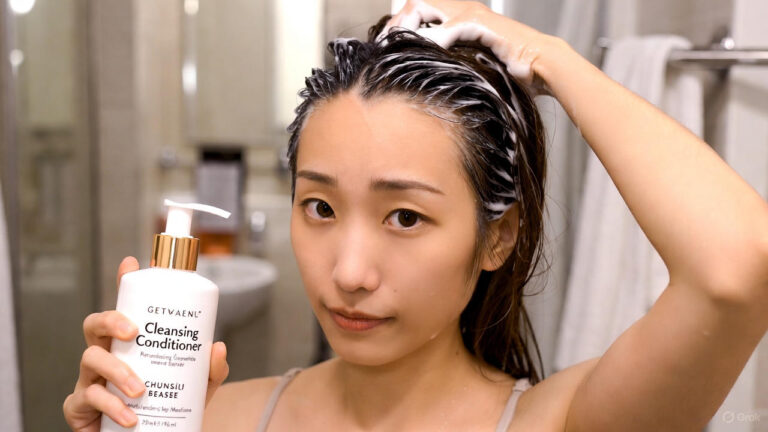Have you ever struggled with finding the right hair products for your hair? Perhaps you’ve tried numerous shampoos, conditioners, and styling products, but nothing seems to work.
Well, the problem might not be the product itself but rather not knowing your hair type. Understanding your hair type is the first step towards finding the right products and properly caring for your hair.
In this article, we will discuss how to work out your hair type and provide some tips on taking care of your hair based on its specific characteristics.
Understanding the Different Hair Types
Understanding the different hair types is important in identifying your hair’s unique characteristics and needs.
There are four basic hair types: straight, wavy, curly, and coily. Straight hair is generally smooth and straight with no visible curl, while wavy hair has loose, S-shaped waves. Tighter, more defined curls characterize curly hair, and coily hair has tight, springy curls or coils.
Each hair type’s characteristics, including texture, porosity, and density, affect its behavior. Texture refers to the thickness of each strand, with fine hair being the thinnest and coarse hair being the thickest.
Porosity refers to how easily hair absorbs and retains moisture, with low-porosity hair being more resistant to moisture and high-porosity hair being more prone to moisture absorption. Density refers to how many strands of hair are on the head, with thin hair having fewer strands and thick hair having more.
Understanding your hair type can help you choose the right products and styling techniques to care for your hair properly. It can also help you achieve your desired look and prevent common issues like frizz or breakage.
Identifying Your Hair Type

Identifying your hair type is essential for determining the right hair care regimen to keep your hair healthy, strong, and beautiful. There are four basic hair types: straight, wavy, curly, and coily, each with unique characteristics determining how to care for them.
Hair Texture
The first factor to consider when identifying your hair type is hair texture. Hair texture refers to the diameter of individual hair strands, which can be fine, medium, or coarse. Fine hair strands are small in diameter and can easily become weighed down by heavy products.
Medium hair strands are thicker and can hold styles better than fine hair. Coarse hair strands are the thickest and most difficult to manage but can withstand heat and chemical treatments.
Hair Pattern
The second factor to consider is hair pattern. Hair pattern refers to the shape of the hair strand, which can be straight, wavy, curly, or coily. Straight hair has a smooth and sleek texture and is typically shiny. Wavy hair has a subtle wave pattern and can be prone to frizz.
Curly hair has a distinct “S” pattern and can be prone to dryness. Coily hair has a tight “Z” pattern and can be prone to shrinkage.
Hair Porosity
Hair porosity refers to how well hair absorbs and retains moisture. Low porosity hair has a tightly bound cuticle layer that resists moisture, making it challenging to absorb products. Normal porosity hair has a balanced cuticle layer and quickly absorbs moisture. High porosity hair has an open cuticle layer, making it easy to absorb moisture but challenging to retain.
Hair Density
Hair density refers to the number of hair strands on your scalp, which can be thin, medium, or thick. Thin hair has fewer strands and can be prone to breakage. Medium hair has a balanced number of strands, while thick hair has an abundance of strands and can be challenging to manage.
Tips for Taking Care of Your Hair Type

Straight Hair
- Shampoo and condition your hair regularly to keep it clean and hydrated.
- Use a heat protectant before using any heating tools, such as a straightener or blow dryer, to prevent heat damage.
- Use a boar bristle brush to distribute natural oils from your scalp to the ends of your hair.
Wavy Hair
- Use a moisturizing shampoo and conditioner to keep your hair hydrated.
- Use a wide-toothed comb or a finger comb to detangle your hair when it’s wet.
- Apply a curl-enhancing cream or mousse to define your waves.
Curly Hair
- Use a sulfate-free shampoo and conditioner to prevent stripping your hair of its natural oils.
- Detangle your hair with a wide-toothed comb or your fingers when it’s wet.
- Apply a leave-in conditioner or curl-defining cream to enhance your curls.
Coily Hair
- Co-wash your hair with a cleansing conditioner instead of shampoo to prevent drying out your hair.
- Use a wide-toothed comb or your fingers to detangle your hair when it’s wet.
- Apply a moisturizing leave-in conditioner or oil to hydrate your hair and reduce frizz.
Conclusion
Identifying your hair type can help you better understand how to care for and style your hair. By understanding your hair texture, pattern, porosity, and density, you can tailor your hair care routine to meet the specific needs of your hair type.
Remember, no “right,” or “wrong” hair type exists, and embracing and loving your natural hair is the key to feeling confident and beautiful. With these tips and knowledge, you can work out your hair type and achieve healthy, beautiful hair that makes you feel like the best version of yourself.



